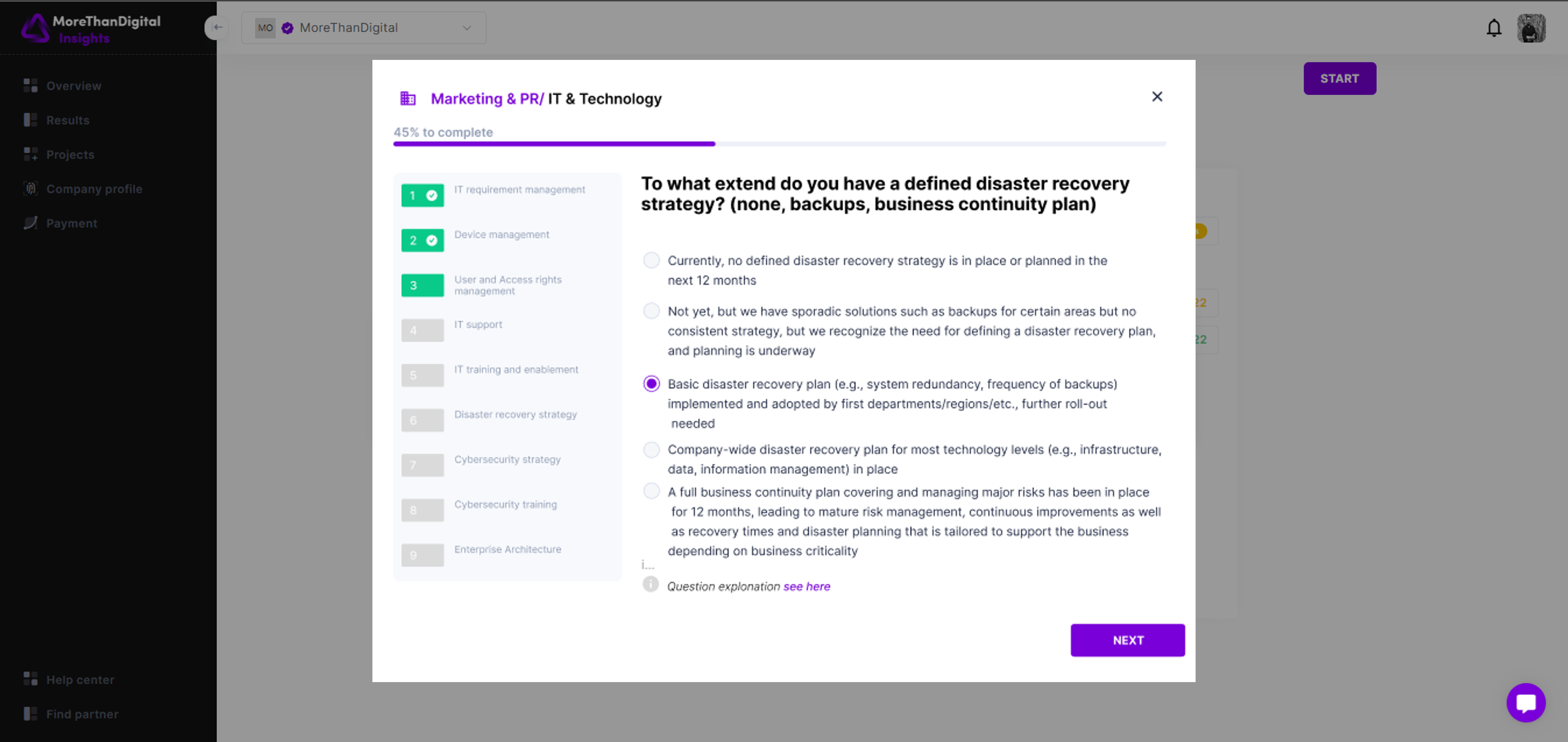The maturity of your organization is the foundation for growth and sustainability. MoreThanDigital Insights' maturity modules provide a unique lens through which to assess the status of various aspects of your organization. Unlike the KPI and numerical modules that look at quantifiable data, the maturity modules assess qualitative aspects that can vary across departments, teams and the entire organization. This guide will help you use the maturity modules effectively to gain deep insights into your organization's operational effectiveness and readiness for future challenges.
Maturity modules are designed to evaluate the qualitative dimensions of your organization, such as operational efficiency, innovation capability, and organizational culture. These assessments are crucial as they provide a nuanced understanding of where your company stands in terms of maturity across different domains and topics.

Multiple Truths: Unlike financial data, maturity assessments can have "multiple truths," reflecting the diverse perspectives within an organization.
Surveys: Maturity modules often utilize surveys to gather feedback from employees, allowing for a broad spectrum of insights.
Anonymity: To encourage honest and uninhibited feedback, responses to maturity surveys are anonymous. Participants can see their own answers, but aggregated results are presented without identifiers to ensure privacy.
Access to Surveys: When employees are invited to participate in a "Company Overall" assessment or specific departmental surveys, they gain access to all relevant maturity questionnaires.
Anonymity Assured: Participants can fill out surveys knowing their responses are confidential, with only the aggregate, anonymized data being accessible to authorized roles like managers, owners, or consultants.
Broad Participation: Managers can invite numerous employees to take part in these surveys, enhancing the data's reliability and comprehensiveness. The system tracks who has accepted the invitation, maintaining the anonymity of the responses.
Benchmarking: The maturity modules enable organizations to measure and compare various dimensions of their operational and strategic maturity. This benchmarking is instrumental in identifying areas that need improvement or investment.
Resource Allocation: Insights gleaned from the maturity assessments help in strategically allocating resources to projects that promise the most significant value and impact, ensuring the organization's growth and adaptability.
Encourage Participation: The more employees participate, the richer and more accurate the insights. Encourage a culture of openness and assurance of anonymity to boost participation rates. Use the CSV upload functionality to invite a list of employees easily.
Review and Act: Regularly review the aggregated results to understand the maturity landscape of your organization. Use these insights to inform strategic decisions and initiate projects aimed at addressing identified gaps.
Continuous Assessment: Maturity is dynamic, not static. Regularly reassess your organization to track progress over time and adjust strategies as needed. Best is to make at least once a year an assessment.